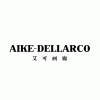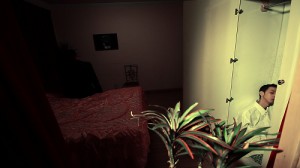 |
Aike-Dellarco
Second Floor, No. 1 Building,
50 Moganshan Road,
Shanghai, China
tel: +86 21 52527164
fax: +86 21 52527164
send email
website
|

Enlarge
|
| The Personal is Public
|
|
| by Aike-Dellarco
Location: Galleria dell'Arco
Artist(s): CHEN Zhou, LI Ran, ZHENG Huan
Date: 31 May - 26 Jun 2011
AIKE-DELLARCO is pleased to announce the upcoming group show “The Personal is Public” (from May 21 to June 26, 2011), which will feature new multimedia installation works by young artists Chen Zhou, Li Ran, and Zheng Huan.
The rise of microblogs, like Twitter and Weibo, has changed people’s way of life and interactions on the sly. With these kinds of social media, everyone can record information or express their opinions, and in a scattered and fragmentary way spread word on decentralized platforms where everyone is equal. Professionals in the art world have equally joined in this wave; in various discursive forms such as texts, photos, videos, and sound, they have been actively participating in various public events currently taking place, in order to express positions and unleash their own ideas. For independent artists who create on their own, their works constitute the most fundamental reflection and criticism of this society; from a larger perspective, creative works are an artist’s social views.
The title of the exhibition comes from the well-known feminist slogan, The works of the three artists in this exhibition are the artistic products connected to the specific social context of the present day.
Akin to two complementary monumental sculptures, Zheng Huan’s sculptural installation, “Disappeared River” is made up of two wooden structures supported by several legs in two lines; on top of these two structures are triangular models made of industrial wax, one of a bridge with arches of increasing size, the other with traces of an animal’s footprint on its surface. The classically ordered, geometric shapes endow the piece with detachment and a sense of distance, while the bridge that has lost its function and the bewildering footprints resemble depictions of old, bygone systems and power structures: a historically important thoroughfare of a bridge now devoid of purpurse, and a social reality in disguise in the attempt to conceal reality.
Chen Zhou’s two-screen video installation “Wake up, my son, you’re still in dream” comes, to a certain degree, from his own personal memory. In a windowless bedroom with blood-red curtains, a son hides in the wardrobe out of fear of his father, while the seemingly schizophrenic father either sits on the bed or paces around the room. Accompanying the moist and foggy camera lens are close-ups of the father and son’s faces; the stand-off between fear and anxiety transforms into an imaginary image of overcoming the feared father. The actual exhibition will project abstract visuals which create a hallucinatory atmosphere hanging over the main video output of the television screen. This split and chaotic work presents the crisis of family morality and the ardent desire to transform conditions in the present day, while on another level, it sheds light on the resistance to patriarchy and reveals a certain self-awakening.
Li Ran’s painting installation “The Difficulty of Meeting” is composed of a set of armchairs and coffee table on a platform, as well as three oil paintings in the background. On the coffee table are two microphones facing towards the two armchairs; the paintings on the left and right depict figures that gaze at one another with indifference and apathy, while the painting in the center portrays a landscape of a snowy mountain, which appears to symbolize mental fragmentation and the impossibility of communication between people. The entire installation is a metaphor of how all direct forms of resistance in contemporary society are transformed into rational forms of dialogues. The transformation of structure forces all kinds of forces to regroup and to reconnect, making dialogue itself a complex and arduous game of high stakes. Two standalone paintings by Li Ran are also displayed, dealing with the themes of communication and interaction. |
|
|
|
|
